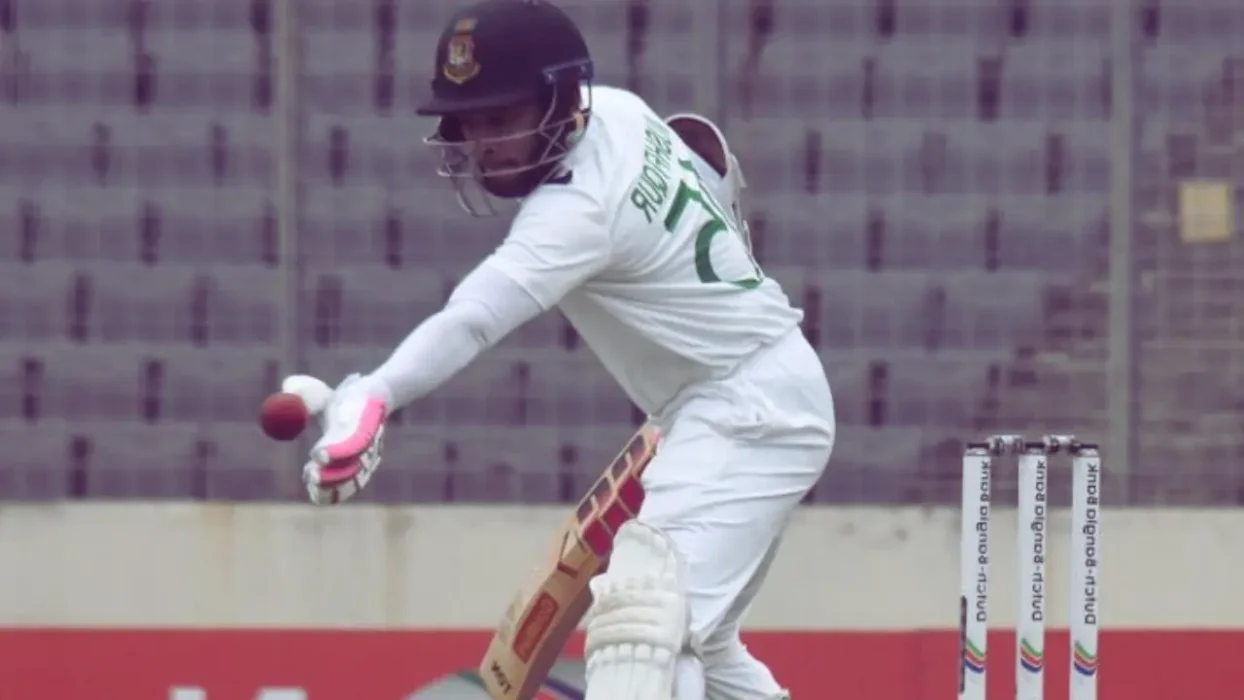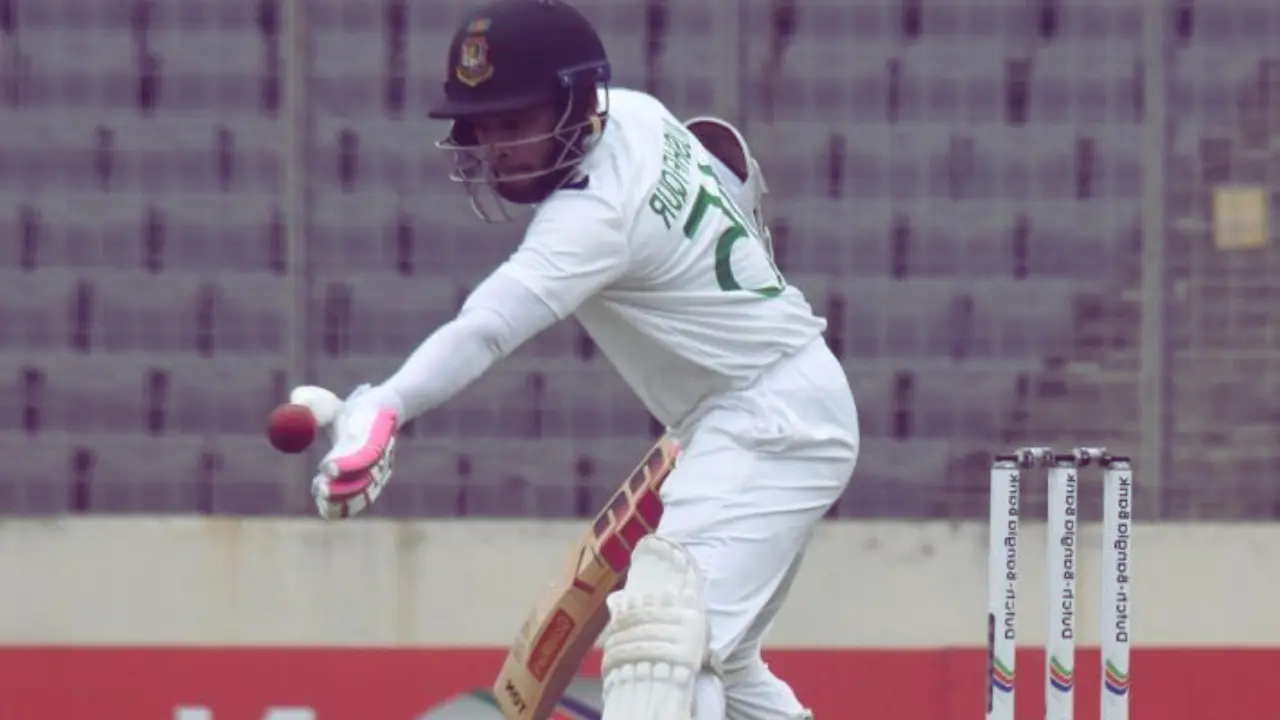Mushfiqur Rahim, the veteran Bangladesh batsman, became the first to be dismissed for obstructing the field during the second Test against New Zealand recntly. This incident sparked questions and confusion among fans and commentators alike, as the dismissal was initially called “handling the ball” by some sources.
Let’s delve into the reasons behind this curious incident and clarify the difference between the two modes of dismissal.
Table of Contents
The incident:
While facing a delivery from Kyle Jamieson in the 41st over, Rahim attempted a defensive shot. The ball bounced near the crease and Rahim, fearing it might hit his stumps, instinctively pushed it away with his glove. The New Zealand fielders immediately appealed, and the on-field umpires referred the decision to the third umpire.
After reviewing the replays, the third umpire declared Rahim out for obstructing the field. This decision surprised many, as the dismissal mode was not explicitly mentioned as “handling the ball.”

Understanding the Difference:
Prior to 2017, “handling the ball” was indeed a separate dismissal mode. However, the Cricket Laws were amended that year, and handling the ball was integrated into the broader category of “obstructing the field.”
This change was implemented to simplify the rules and avoid confusion.
Currently, Law 37.1 states that a batsman is out obstructing the field if:
- They willfully attempt to obstruct or distract the fielding side by word or action.
- In the act of receiving a ball delivered by the bowler, they wilfully strike the ball with a hand not holding the bat (except in Law 37.2).
Why Rahim Was Out:
In Rahim’s case, the third umpire deemed his act of pushing the ball away with his glove a deliberate attempt to alter its course. This was to prevent it from hitting the stumps. This was considered willful obstruction of the field, leading to his dismissal under Law 37.1.
Handling the ball vs. Obstructing the field:
While both involve the batsman making contact with the ball, the key difference lies in the intention and the context of the action.
- Handling the ball: This refers to situations where the batsman deliberately touches the ball with their hand or glove, except when playing the ball with the bat. The intention is usually to stop the ball or divert its course for personal advantage.
- Obstructing the field: This encompasses a wide range of actions, including verbal or physical attempts to hinder the fielding side. Handling the ball can be considered a specific example of obstructing the field, as it directly interferes with the ball’s trajectory.
Conclusion:
Mushfiqur Rahim‘s dismissal served as a reminder of cricket’s nuanced rules and the importance of interpreting them accurately. While the mode of dismissal was initially confusing due to its association with the previous “handling the ball” rule, understanding the current Law 37.1 and the distinction between the two modes sheds light on the justification for the on-field decision.
Read More:

